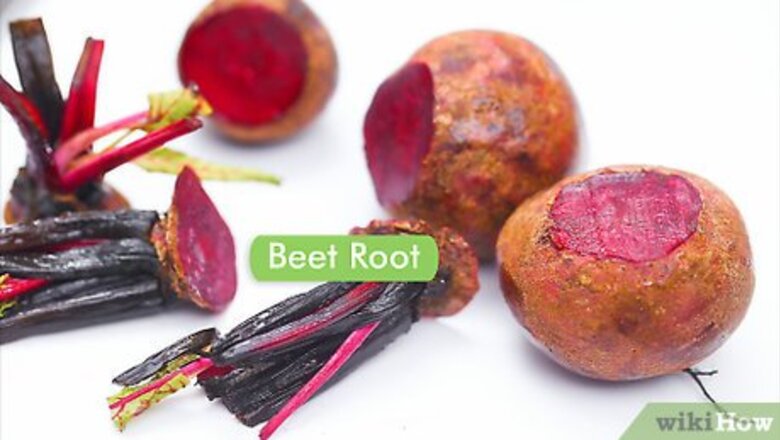
views
Using Home Remedies

Use beetroot. Don't want to shell out your hard-earned cash on expensive makeup? Try one of these home remedies. You may already have the ingredients in your kitchen (at worst, you may need to make a trip to the grocery store.) For example, beetroot, which is often sold at health food stores, contains a powerful red pigment — in fact, earlier in history, it was used as a dye. Carefully rubbing beetroot on your cheeks can give them a subtle pink hue, though it's important not to over-apply this strong dye. Be gentle when using beetroot, as its natural dyes can easily stain fabrics. Remove beetroot from your cheeks by rubbing with a slice of lemon.
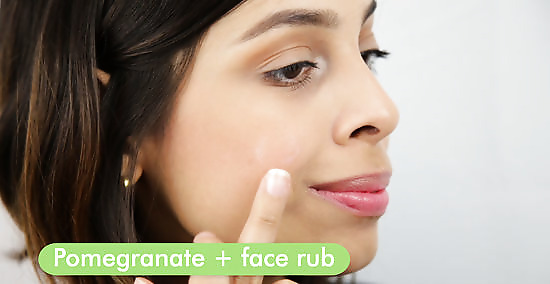
Add grape or pomegranate juice to your face rub for color. Mixing just a splash of a red-colored fruit juice (like grape or pomegranate) into your daily facial rub or lotion is one easy way to give your product mild "rosy" properties. Plus, it usually smells great. Add only a small dash of your juice — no more than a teaspoon or so. Using too much can leave you with a watery rub that leaves your cheeks feeling sticky once it dries.
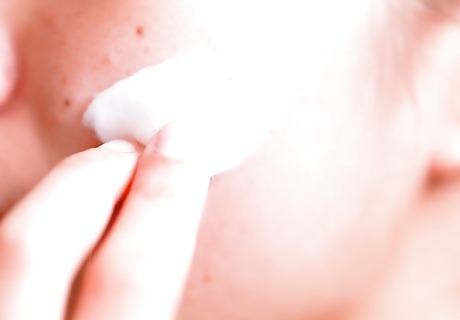
Apply vegetable oil to give your cheeks a healthy glow. Mild, non-greasy vegetable oils have long been used to give the skin an attractive natural "glow." In fact, the ancient Romans used olive oil as a sort of skin lotion to make themselves look good after bathing. You can get the same effect today by rubbing a small dot of vegetable oil into each cheek — the natural sheen you get will bring out your cheeks' gorgeous natural complexion. Below are a few oils that are generally safe for this sort of use: Grapeseed oil Olive oil Sunflower oil Apricot kernel oil Note:If you get acne easily, you may want to be cautious with this method, as some greasier oils can clog pores and lead to outbreaks.
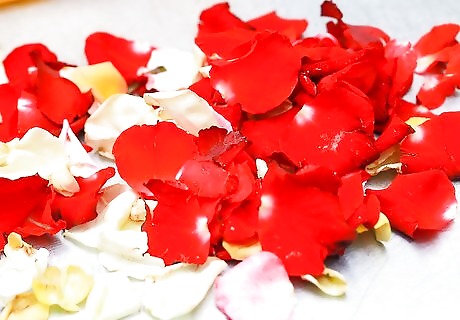
Use a rose petal rub. If you're looking to pamper yourself, consider a rose petal rub. The natural pigments in the petals will help add color to your cheeks and, if you're using petals from a fragrant rose, they'll have a natural perfuming effect. To make your rose petal rub, combine about half a cup of rose petals with 1 cup of sugar, 1/2 cup of virgin coconut oil (or one of the oils above), and about 20 drops of essential rose oil if you have it. Mix the ingredients, grinding the rose petals into the mixture as you go (a mortar and pestle or food processor can be helpful here.) Gently rub the mixture onto your cheeks after bathing, then rinse off and pat dry.
Getting Pink Cheeks With Makeup
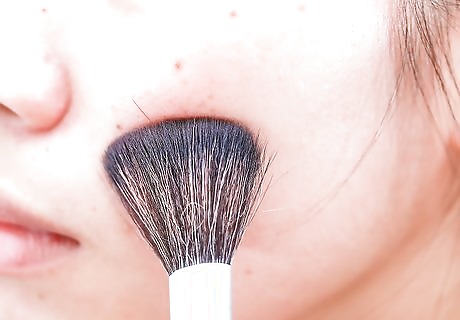
Apply light blush for a subtle glow. Let's face it — sometimes, cheeks just refuse to be cooperative. If you can't get pinker cheeks with the tricks above, try using a little blush to give your cheeks a boost! Start light by adding just a little blush. Remember, you can easily add more, but it can be a pain to remove your blush and start over if you add too much. There's no single "right" type of makeup to use — what looks good on one person may not look good on another. However, if you're a makeup beginner, it's generally a good idea to start with a mild pink blush, which can contain hints of gold or peach if you like. These shades are a good general choice because they complement nearly all skin tones. See our blush article for tips on applying your makeup.
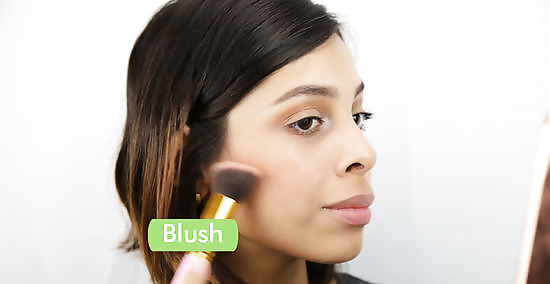
Apply medium blush to define your cheeks. The more blush you add, the more noticeable your "rosy cheek" effect will be. If you'd like to bring out your cheeks a little more after applying your first light dusting,feel free to do so, but be wary of applying too much. As a general rule, people with very light skin should be careful about the amount of blush they apply. Because a pale complexion makes makeup more noticeable, it can be easy to use too much blush (though there are plenty of exceptions to this rule.)
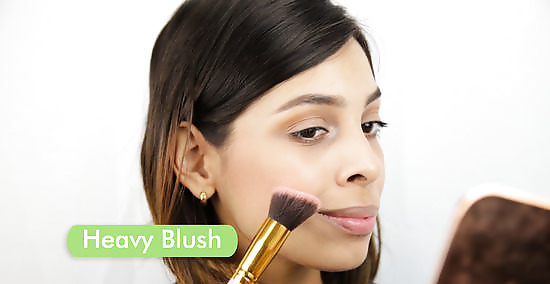
Apply heavy blush for a bold effect. Applying lots of blush will certainly give you rosy cheeks, but if you don't balance your blush with the rest of your makeup and your outfit, it can easily distract from your natural beauty. Overly-heavy applications of blush can give an artificial, doll-like appearance, especially to people with very light skin.
Getting Pink Cheeks Naturally
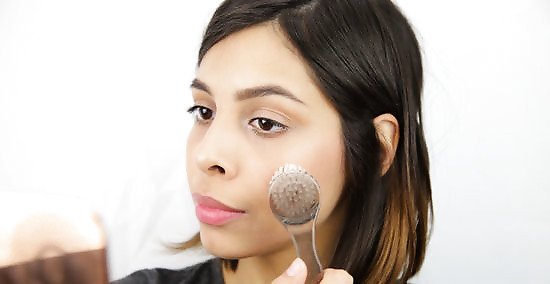
Exfoliate. Many beauty magazines recommend a regular regimen of facial exfoliation to keep your cheeks pink. The reasoning behind this is that exfoliation helps remove dead skin cells that can give your face a "dull," cold appearance. If you have one, try using an exfoliating cream or rub (preferably one that contains a moisturizer) to clean your face every morning. If you don't, no worries — you can make your own with olive oil and sugar.
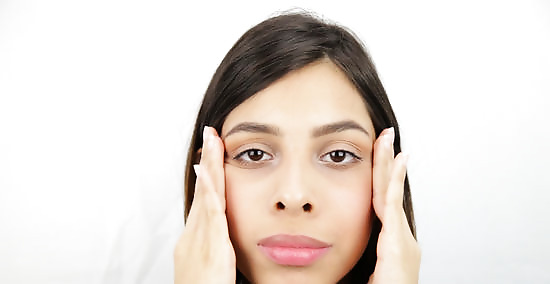
Give yourself a facial massage. Another trick that beauticians will sometimes recommend for giving yourself pink cheeks is a facial massage. Massages improve circulation and increase blood flow to the area you massage, giving the impression of pinker cheeks. While this solution is a temporary one, it's one that's very quick and easy to do on your own. To give yourself a facial massage, close your eyes, get into a comfortable position, and bring your hands up to your face. Use the tips of your fingers to press into the skin of your face, starting at the top of your forehead and gradually working your way down to your chin. Spend extra time on your cheeks, gently kneading and pressing them to increase blood flow.
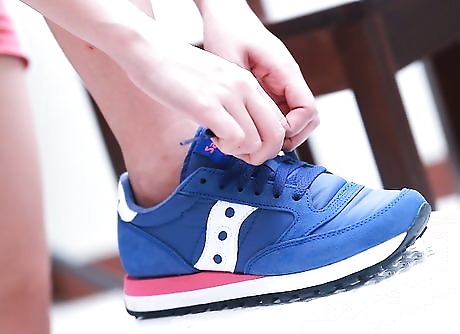
Exercise! One sure-fire way to get your cheeks nice and red is to simply do a little exercise. It's no secret that activities like playing sports, jogging, lifting weights, and doing calisthenics can make you flushed — generally, the more intense the exercise, the brighter your cheeks will be. Note however, that a regular exercise routine can actually make it harder for you to get rosy cheeks in the long run. If you're able to reduce your blood pressure with steady exercise (which, by the way, is a good thing!), the capillaries in your cheeks responsible for giving you pink cheeks won't fill with blood during exercise as easily.

Stay warm. Keeping yourself warm and cozy in cold weather can sometime have the side effect of giving you pink cheeks. When your body temperature is hot, the body automatically redirects blood from the inside of your body to the blood vessels near the surface. This blood causes your cheeks (and likely other parts of your body) to get a reddish or pinkish tinge. Don't go overboard here — wearing a warm coat in winter is a good idea, but deliberately subjecting yourself to uncomfortably high temperatures can be unsafe. Cool off right away if you start to sweat profusely or feel light-headed.
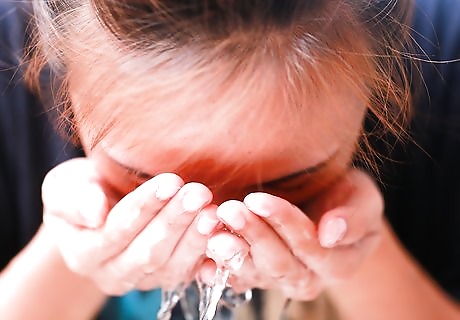
Rinse your face with warm water. A nice facial rinse doesn't just feel great — it can also give your cheeks a "splash" of pink! Heating up the skin of your face with warm water causes the body to direct more blood there. This extra blood can make your cheeks a little pinker with very little effort on your part.
Using Unverified Methods
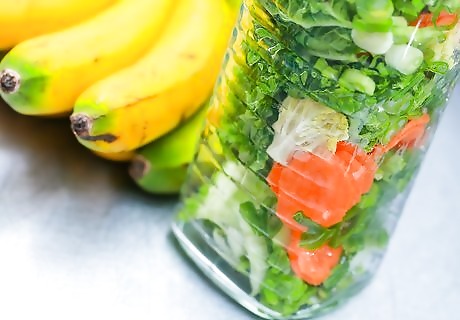
Try eating a fruit-and-vegetable rich diet. Some sources claim that a diet rich in plant products can encourage rosy cheeks. The logic behind this method is that the vitamins, minerals, and other nutrients in these foods help the body "stay healthy" and promote good blood flow. In particular, green vegetables like broccoli, spinach, kale, and so on are prized because of their iron content (iron has a natural red hue — it's what makes your blood red.)
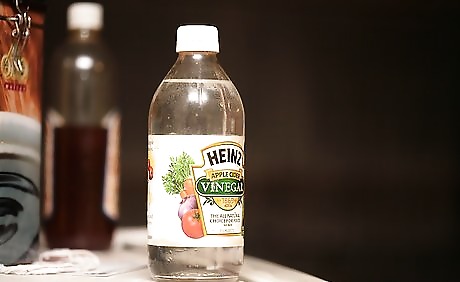
Try vinegar. Vinegar is a substance that appears in many supposed home remedies. According to this method's supporters, vinegar cleans, rejuvenates, and "detoxifies" the skin. In addition, vinegar is claimed to promote good blood flow. Be sure to rinse your skin after using vinegar to eliminate the unpleasant smell. Use white vinegar or apple cider vinegar, not balsamic or red wine vinegar. Though the latter two have natural reddish hues, they can leave your skin feeling sticky afterwards.
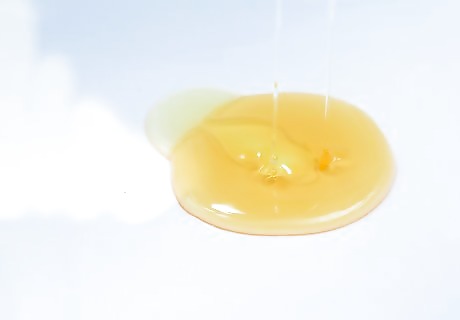
Try a lemon-honey rub. According to some, lemon juice's natural acidic properties make it a great choice for getting your skin looking great. The logic behind these claims is usually that the acid acts as a cleaning, "purifying" agent, leaving the skin feeling (and looking) clear and refreshed. To make a lemon-honey rub, mix a quarter cup of lemon juice with three-quarters cups of sugar and about a tablespoon of honey. Rub the mixture onto your cheeks, allow it to sit for about one minute, then remove it and rinse your face. This rub makes a great exfoliation product as well.

Try drinking plenty of water. According to some sites, simply staying well-hydrated can help keep your cheeks rosy. Drinking plenty of water does have several minor health benefits, including making the skin appear slightly more "full" and supple. By this logic, drinking plenty of water can give you an attractive set of cheeks by bringing out their natural shape, which may make them appear rosier. While everyone's needs are different, most health authorities will recommend about eight 8-ounce glasses of water per day (about two liters total) for optimal health.
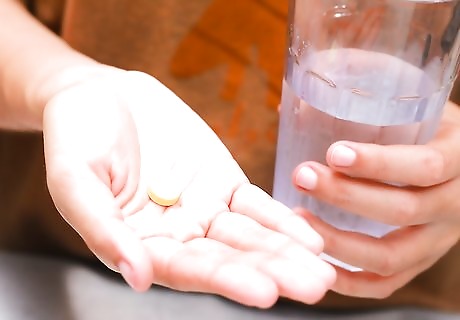
Try taking vitamins E and C. Though their effectiveness isn't certain, vitamin supplements appear in many, many lists of rosy cheek home remedies. These vitamins are claimed to increase the elasticity and suppleness of the skin, leading to a healthier overall appearance and a natural "glow." Note: Vitamin E is a fat-soluble vitamin, which means that it takes a long time for your body to get rid of. Because of this, it's possible to poison yourself if you take lots of vitamin E supplements (the amount you get from your daily food shouldn't ever be dangerous.) As a very general rule, adults shouldn't take more than 400 IU (International Units) of vitamin E per day — using more than this can cause serious side effects. On the other hand, it's very difficult to take unhealthy amounts of vitamin C because it is water-soluble, which means it's easy for your body to get rid of.














Comments
0 comment